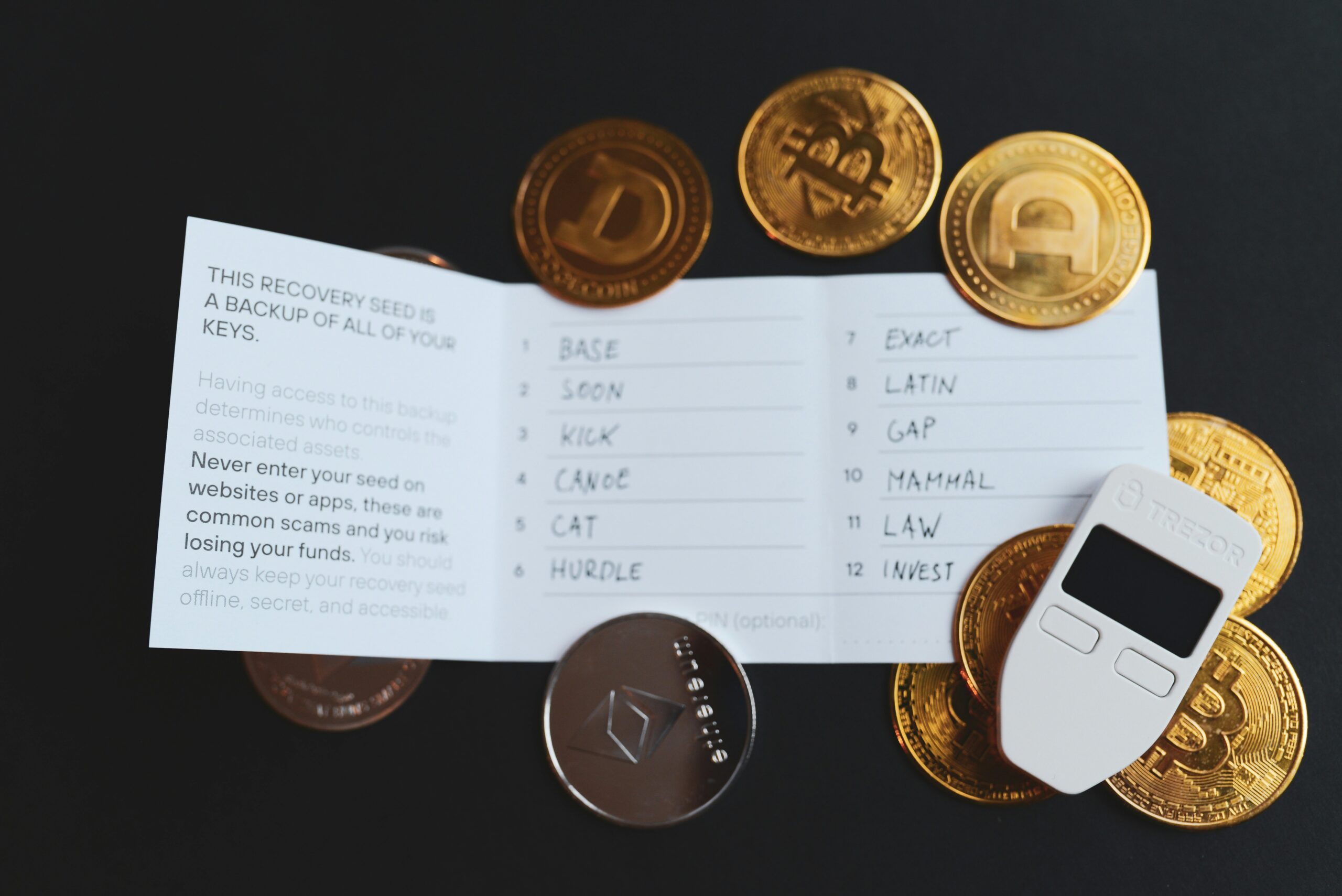A crypto hardware wallet is an essential tool for anyone looking to secure their digital assets. These devices provide robust protection against online threats by storing private keys offline, ensuring that cryptocurrencies remain safe from hacks and breaches. With the increasing value of digital currencies, a reliable hardware wallet is more critical than ever for users who prioritise security.
Utilising a hardware wallet allows individuals to securely manage their crypto holdings without relying on third-party exchanges. Many wallets also offer features such as support for various coins and recovery options, making them versatile solutions for crypto enthusiasts. As the cryptocurrency landscape continues to evolve, understanding the importance of such security measures becomes paramount for safeguarding investments.
Understanding Hardware Wallets
Hardware wallets are a crucial tool in the realm of cryptocurrency security. They provide a robust method for storing private keys, ensuring that digital assets remain safe from online threats.
Hot Wallets vs Cold Wallets
Hot wallets are connected to the internet, allowing for easy access and convenience when making transactions. They are ideal for frequent trading but carry higher risks as they are susceptible to hacking and malware.
In contrast, cold wallets, which include hardware wallets, store private keys offline. This isolation from the internet makes them far more secure against cyber threats. By using a hardware wallet, users can effectively manage their crypto assets while minimising exposure to potential security breaches.
Benefits of Using a Hardware Wallet
A significant advantage of hardware wallets is their strong security features. They store private keys in a physical device, separate from online platforms. This reduces the risk of unauthorised access and ensures that cryptocurrency holdings are safeguarded.
Hardware wallets also offer the convenience of signing transactions securely without exposing private keys. They typically come with user-friendly interfaces and support various cryptocurrencies, making them versatile for different needs. Furthermore, many models include backup options, so users can recover their holdings in case of loss or damage to the device.
Types of Hardware Wallets
There are several types of hardware wallets available on the market. The most common are USB devices, which connect to a computer when needed. These wallets resemble flash drives and are portable, allowing for easy transport and accessibility.
Bluetooth-enabled hardware wallets are also popular, allowing users to connect their wallets to mobile devices. This feature enables convenient access while maintaining the security of cold storage.
Some hardware wallets additionally come with advanced security features, such as biometric authentication or secure enclaves. These variations cater to different user preferences, ensuring that there is a suitable option for everyone concerned about crypto security.
Choosing the Right Hardware Wallet
Selecting the ideal hardware wallet requires consideration of various factors including security features, the range of supported coins, and user experience. Each aspect plays an essential role in ensuring safe and efficient cryptocurrency management.
Security Features
Security is paramount when choosing a hardware wallet. Many reputable wallets, such as those from Ledger and Trezor, integrate a Secure Element chip to enhance data protection. This chip ensures that private keys remain isolated and secure from potential intrusions.
Additionally, wallets with a touchscreen offer an added layer of security, allowing users to verify transactions visually without relying solely on a connected device. Multi-signature options and backup recovery phrases further solidify security measures. It is crucial that users select wallets that prioritise robust security protocols to safeguard their assets.
Supported Coins
The number of supported coins is another critical factor. Some wallets, like Trezor Model T, support a wide variety of cryptocurrencies, making them versatile for diverse portfolios. Users should research the specific digital assets they want to store and ensure compatibility with their chosen wallet.
Moreover, wallets such as Ledger provide support for staking certain cryptocurrencies, adding potential rewards for users. Evaluating the specific coins and tokens supported by a wallet can significantly influence its suitability for individual needs.
User Interface and Experience
A user-friendly interface enhances the overall experience of managing cryptocurrencies. Wallets like Trezor and Ledger are well-known for their intuitive designs, making them accessible for both beginners and experienced users.
In particular, a clear and responsive touchscreen can improve interaction, allowing for seamless navigation between settings and transactions. It is essential to select a wallet that offers comprehensive guidance or tutorials, helping users understand all features. Prioritising usability can lead to a more enjoyable and efficient management experience.
Setting Up a Hardware Wallet
Setting up a hardware wallet involves several critical steps that ensure optimal security for cryptocurrencies. The initialisation process prepares the device for use, while safeguarding recovery phrases and establishing additional security measures are vital for long-term protection.
Initialisation Process
The initialisation of a hardware wallet typically begins with acquiring the device. Once the hardware is obtained, the user should connect it to a computer or mobile device. Following the manufacturer’s instructions is essential.
The user will be prompted to install the official wallet software. This software is crucial for managing assets. During initial setup, the user will create a unique PIN to secure access to their wallet.
This PIN is often the first line of defence. Some wallets, like those from Ledger or Trezor, incorporate a secure element chip to protect sensitive information. Users must ensure the wallet’s firmware is up to date to avoid vulnerabilities.
Recovery Phrases and Backup
During the initialisation, the hardware wallet will generate a recovery phrase, usually consisting of 12 to 24 words. This phrase is critical; it acts as a backup and can restore access to the wallet if the device is lost or damaged.
Users should write down this phrase and store it in a safe location, away from the hardware wallet itself. Never store it digitally. Physical copies are essential for security.
Proper management of recovery phrases is non-negotiable. A user should also consider creating multiple backups in different secure locations. This approach mitigates risks, ensuring continuous access to funds if one backup fails.
Enhancing Security
To further secure the hardware wallet, implementing two-factor authentication (2FA) is recommended. Many wallets offer an option for 2FA through mobile applications.
Utilising 2FA adds an extra layer of security, requiring a second form of verification alongside the PIN. Additionally, users should always connect the wallet using secure networks to prevent potential hacking attempts.
Regularly updating the wallet’s firmware is crucial to addressing any newly discovered security vulnerabilities. Users should avoid sharing sensitive information and stay vigilant against phishing attempts.
By taking these precautions, users can significantly enhance the security of their hardware wallet, ensuring their cryptocurrencies remain safe.
Transacting with Hardware Wallets
Hardware wallets facilitate secure transactions for cryptocurrencies like Bitcoin and Ethereum. They allow users to manage their digital assets, perform exchanges, and even stake their cryptocurrencies, all while maintaining a high level of security.
Performing Transactions
To perform transactions using a hardware wallet, users must first connect the device to a computer or smartphone via USB or Bluetooth. They typically enter their PIN to access the wallet. Once unlocked, they can select the cryptocurrency they wish to send or receive, specifying the relevant amount and wallet address.
After reviewing the details, the transaction is signed within the hardware wallet. This ensures that the private key remains secure and is never exposed to online threats. The signed transaction is then broadcasted to the blockchain network. This process is vital for cryptocurrencies like Bitcoin and Ethereum, as it guarantees the integrity of the transaction.
Exchanging and Staking Cryptocurrency
Users can also exchange cryptocurrencies directly from their hardware wallets. Many wallets have integrated features that allow users to swap Bitcoin for Ethereum or other cryptocurrencies seamlessly. They must select the desired exchange option, input the amount, and confirm the transaction on the hardware device.
Staking is another functionality available in some hardware wallets. Users can lock up a portion of their cryptocurrency to support network operations, such as validating transactions, in exchange for rewards. They should follow the specific steps outlined by their wallet provider to initiate staking, including selecting the cryptocurrency and specifying the amount to be staked.
Managing NFTs and other Crypto Assets
Handling NFTs (non-fungible tokens) is increasingly common with hardware wallets. Users can securely store their NFTs, as the wallets support multiple blockchain standards. To manage these assets, they typically need to interact through compatible platforms or marketplaces.
To transact with NFTs, users select the specific token from their wallet, enter the recipient’s address, and confirm the transaction. Additionally, hardware wallets can manage various cryptocurrencies. By offering clear methods for buying, swapping, and staking crypto, these wallets serve as comprehensive tools for managing digital assets effectively.
Beyond Basic Use: Advanced Features
Advanced features in crypto hardware wallets enhance their functionality and security, enabling users to engage more deeply with the cryptocurrency ecosystem. These features are essential for those looking to maximise both utility and protection.
Connecting to Decentralised Applications (DApps)
Connecting hardware wallets to decentralised applications (DApps) significantly expands their capabilities. By using wallets like the Ledger or Trezor in conjunction with platforms such as the Ledger Live App or Trezor Suite, users can interact with various services, including decentralised finance (DeFi) protocols and NFT marketplaces.
For a seamless experience, hardware wallets often support web3 browsers, allowing users to execute smart contracts and manage digital assets securely. This eliminates the need to expose private keys to potential threats. Integration with DApps also promotes privacy, ensuring that transactions are executed while maintaining user anonymity.
Utilising Security Protocols
Security is paramount in the cryptocurrency space. Advanced hardware wallets offer features such as passphrase protection and Tor authentication. These options act as additional layers of security, safeguarding assets from unauthorised access.
With passphrase protection, users can create a secondary passphrase alongside their standard PIN, ensuring that even if the device is compromised, unauthorised users cannot access funds. Tor authentication further anonymises online activities, concealing users’ IP addresses and enhancing privacy.
Employing these protocols not only secures assets but also builds trust in interactions with DApps and other blockchain services.



